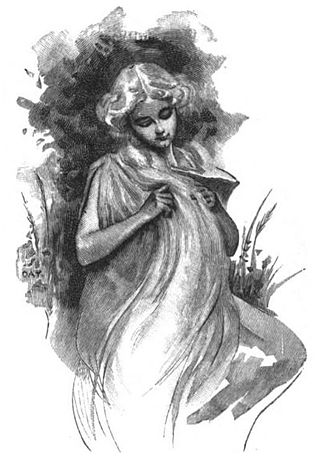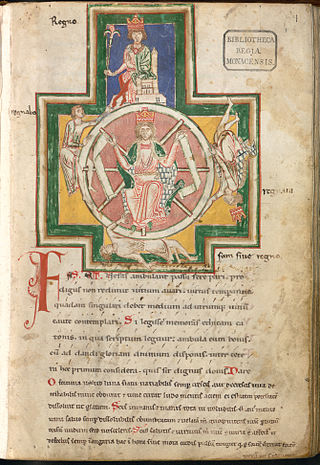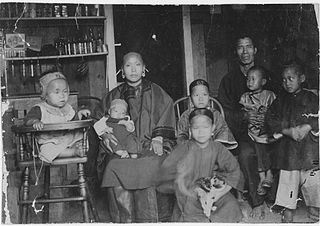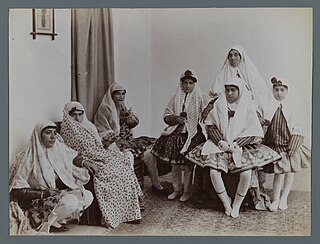Related Research Articles
Concubinage is an interpersonal and sexual relationship between two people in which the couple does not want to, or cannot, enter into a full marriage. Concubinage and marriage are often regarded as similar, but mutually exclusive.

Einhard was a Frankish scholar and courtier. Einhard was a dedicated servant of Charlemagne and his son Louis the Pious; his main work is a biography of Charlemagne, the Vita Karoli Magni, "one of the most precious literary bequests of the early Middle Ages".

In Norse mythology, Sif is a golden-haired goddess associated with earth. Sif is attested in the Poetic Edda, compiled in the 13th century from earlier traditional sources, and the Prose Edda, written in the 13th century by Snorri Sturluson, and in the poetry of skalds. In both the Poetic Edda and the Prose Edda, she is known for her golden hair and is married to the thunder god Thor.

Carmina Burana is a manuscript of 254 poems and dramatic texts mostly from the 11th or 12th century, although some are from the 13th century. The pieces are mostly bawdy, irreverent, and satirical. They were written principally in Medieval Latin, a few in Middle High German and old Arpitan. Some are macaronic, a mixture of Latin and German or French vernacular.
Himiltrude was the mother of Charlemagne's first-born son Pippin the Hunchback. Some historians have acknowledged her as the wife of Charlemagne, however, she is often referred to as a concubine.

Old High German is the earliest stage of the German language, conventionally identified as the period from around 500/750 to 1050. Rather than representing a single supra-regional form of German, Old High German encompasses the numerous West Germanic dialects that had undergone the set of consonantal changes called the Second Sound Shift.
Pilegesh is a Hebrew term for a concubine, a marital companion of social and legal status inferior to that of a wife. Among the Israelites, men commonly acknowledged their concubines, and such women enjoyed the same rights in the house as legitimate wives.

The phantom time conspiracy theory is a pseudohistorical conspiracy theory first asserted by Heribert Illig in 1991. It hypothesizes a conspiracy by the Holy Roman Emperor Otto III, Pope Sylvester II, and possibly the Byzantine Emperor Constantine VII, to fabricate the Anno Domini dating system retroactively, in order to place them at the special year of AD 1000, and to rewrite history to legitimize Otto's claim to the Holy Roman Empire. Illig believed that this was achieved through the alteration, misrepresentation and forgery of documentary and physical evidence. According to this scenario, the entire Carolingian period, including the figure of Charlemagne, is a fabrication, with a "phantom time" of 297 years added to the Early Middle Ages.

The Chinese kinship system is among the most complicated of all the world's kinship systems. It maintains a specific designation for almost every member's kin based on their generation, lineage, relative age, and gender. The traditional system was agnatic, based on patriarchal power, patrilocal residence, and descent through the male line. Although there has been much change in China over the last century, especially after 1949, there has also been substantial continuity.

A husband is a man involved in a marital relationship, commonly referred to as a spouse. The specific rights, responsibilities, and societal status attributed to a husband can vary significantly across different cultures and historical periods, reflecting a global perspective on this role.
Bernard or Bernhard was the only child of Emperor Charles the Fat. He was born of an unknown concubine and was thus considered illegitimate. Charles tried to make him his heir, but failed in two attempts.
Pepin, or Pippin the Hunchback was a Frankish prince. He was the eldest son of Charlemagne and noblewoman Himiltrude. He developed a humped back after birth, leading early medieval historians to give him the epithet "hunchback". He lived with his father's court after Charlemagne dismissed his mother and took another wife, Hildegard. Around 781, Pepin's half brother Carloman was rechristened as "Pepin of Italy"—a step that may have signaled Charlemagne's decision to disinherit the elder Pepin, for a variety of possible reasons. In 792, Pepin the Hunchback revolted against his father with a group of leading Frankish nobles, but the plot was discovered and put down before the conspiracy could put it into action. Charlemagne commuted Pepin's death sentence, having him tonsured and exiled to the monastery of Prüm instead. Since his death in 811, Pepin has been the subject of numerous works of historical fiction.
The phrase more danico is a Medieval Latin legal expression which may be translated as "according to Danish custom", i.e. under Medieval Scandinavian customary law.

Germanic law is a scholarly term used to describe a series of commonalities between the various law codes of the early Germanic peoples. These were compared with statements in Tacitus and Caesar as well as with high and late medieval law codes from Germany and Scandinavia. Until the 1950s, these commonalities were held to be the result of a distinct Germanic legal culture. Scholarship since then has questioned this premise and argued that many "Germanic" features instead derive from provincial Roman law. Although most scholars no longer hold that Germanic law was a distinct legal system, some still argue for the retention of the term and for the potential that some aspects of the Leges in particular derive from a Germanic culture. Scholarly consensus as of 2023 is that Germanic law is best understood in opposition to Roman law, in that it was not "learned" and incorporated regional pecularities.
The Heerbann, in the Imperial Military Constitution (Reichsheeresverfassung) of the Holy Roman Empire, was the call to all free landowners capable of bearing arms to participate in a military campaign, i.e. in an imperial war (Reichskrieg).

Concubinage in the Muslim world was the practice of Muslim men entering into intimate relationships without marriage, with enslaved women, though in rare, exceptional cases, sometimes with free women. If the concubine gave birth to a child, she attained a higher status known as umm al-walad.

Cariye was a title and term used for category of enslaved women concubines in the Islamic world of the Middle East. They are particularly known in history from the era of the Ottoman Empire, where they legally existed until the mid-19th century.

In classical Islamic law, a concubine was a slave-woman with whom her master engaged in sexual relations. Concubinage was widely accepted by Muslim scholars in pre-modern times. Most modern Muslims, both scholars and laypersons, believe that Islam no longer permits concubinage and that sexual relations are religiously permissible only within marriage.

Concubinatus was a monogamous union, intended to be of some duration but not necessarily permanent, that was socially and to some extent legally recognized as an alternative to marriage in the Roman Empire. Concubinage became a legal concern in response to Augustan moral legislation that criminalized adultery and imposed penalties on some consensual sexual behaviors outside marriage.

Concubinage in China traditionally resembled marriage in that concubines were recognized sexual partners of a man and were expected to bear children for him. Unofficial concubines were of lower status, and their children were considered illegitimate. The English term concubine is also used for what the Chinese refer to as pínfēi, or "consorts of emperors", an official position often carrying a very high rank. The practice of concubinage in China was outlawed when the Chinese Communist Party came to power in 1949.
References
- ↑ Karras, Ruth Mazo (2017-01-20). Sexuality in Medieval Europe: Doing Unto Others. Taylor & Francis. ISBN 9781351979900.
- ↑ Wemple, Suzanne Fonay (2015-12-16). Women in Frankish Society: Marriage and the Cloister, 500 to 900. University of Pennsylvania Press. ISBN 9781512821338.
- ↑ Deutsches Wörterbuch of Jacob Grimm and Wilhelm Grimm. 16 Vols, 32 Fasicles]. Leipzig: S. Hirzel 1854-1960. -- Edition of 1971. Available online here Archived 2011-05-21 at the Wayback Machine .
- ↑ Barbero, Alessandro (2004-09-10). Charlemagne: Father of a Continent. University of California Press. ISBN 978-0-520-23943-2.
- ↑ Magill, Frank Northen; Aves, Alison (1998). Dictionary of World Biography: The Middle Ages. Routledge. ISBN 9781579580414.
- ↑ Ebel, Else. Der Konkubinat nach altwestnordischen Quellen: Philologische Studien zur sogenannten "Friedelehe." (Concubinage According to Old West Nordic Sources: Philological Studies on the So-Called "Friedelehe."). Ergänzungsbände zum Reallexikon der germanischen Altertumskunde 8, Berlin, Walter de Gruyter, 1993.
- ↑ Esmyol, Andrea (2002). Geliebte oder Ehefrau? : Konkubinen im frühen Mittelalter (Lover or Wife? Concubines in the early Middle Ages). Köln: Böhlau. ISBN 3-412-11901-6. OCLC 49584572.